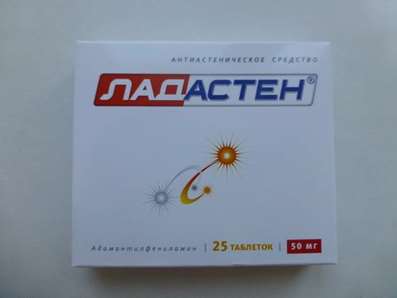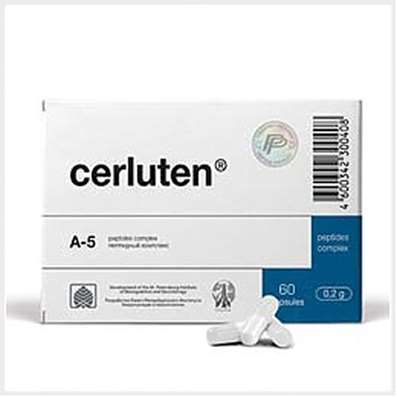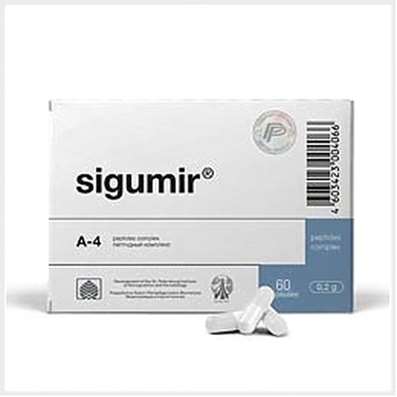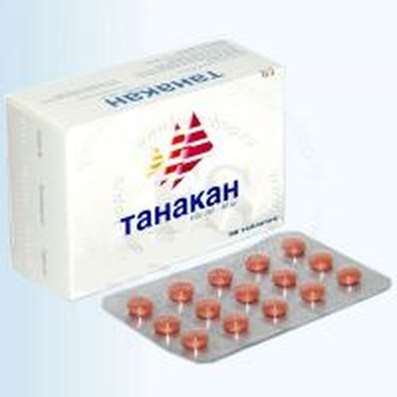Instruction for use: Perphenazine
I want this, give me price
The Latin name of the substance Perphenazine
Perphenazinum (genus. Perphenazini)
Chemical name
4- [3- (2-Chloro-10H-phenothiazin-10-yl) propyl] -1-piperazineethanol
Gross formula
C21H26ClN3OS
Pharmacological groups:
Neuroleptics
Antiemetic drugs
The nosological classification (ICD-10)
F06 Other mental disorders due to brain damage or dysfunction or somatic disease: Somatogenic depression; Somatogenic psychosis
F06.2 Organic delusional [schizophreniform-like] disorder: Chronic paranoid conditions; Organic Delusional Disorder
F06.6 Organic emotionally labile [asthenic] disorder: Asthenic disorders; Asthenic conditions; Asthenic disorder; Asthenic state; Asthenic phenomenon; Asthenic-vegetative disturbance; Asthenoadressive disorder; Astheno-depressive disorder; Asthenodepressive state; Asthenoepochondrial phenomena; Asthenoneurotic disorder; Astheno-neurotic state; Hypochondriac and asthenoipochondrial condition; Organic asthenodepressive disorder; Psychoastenopathy disorder
F10.2 Syndrome of alcohol dependence: Dipsomania; Drunken drunkenness; Dependence on alcohol; Psycho-organic syndrome in chronic alcoholism; Alcoholism; Alcohol addiction; Drunken state; Alcohol abuse; Ideator disorder in alcoholism; Obsessive attraction to alcohol; Neurotic symptoms with alcoholism; Pathological attraction to alcohol; Chronic alcoholism; Quarterly drinking; Decreased desire for alcohol
F20 Schizophrenia: Schizophrenic conditions; Exacerbation of schizophrenia; Schizophrenia; Chronic schizophrenia; Dementia praecox; Bleuler's disease; Psychotic discordant; Dementia early; The febrile form of schizophrenia; Chronic schizophrenic disorder; Psychosis of the schizophrenic type; Acute form of schizophrenia; Acute schizophrenic disorder; Cerebral Organic Insufficiency in Schizophrenia; Acute attack of schizophrenia; Schizophrenic psychosis; Acute schizophrenia; Sluggish schizophrenia; Sluggish schizophrenia with apathoabulic disorders; Acute stage of schizophrenia with excitation
F29 Inorganic psychosis, unspecified: Childhood psychoses; Psychomotor agitation in psychoses; Hallucinatory-delusional disorders; Hallucinatory-delusional syndrome; Intoxication psychosis; Manic-delusional disorders; Manic chronic psychosis; Manic psychosis; Acute psychosis; paranoid psychosis; Paranoid psychosis; Subacute psychosis; Presenile psychosis; Psychosis; Intoxicating psychosis; Psychosis is paranoid; Psychosis in children; Reactive psychosis; Chronic psychosis; Chronic hallucinatory psychosis; Chronic psychosis; Chronic psychotic disorder; Schizophrenic psychosis
F60.3 Emotionally unstable personality disorder: Mood swings; Mental lability; Emotional fencing; Emotional detachment; Mood Change; Lability of mood; Instability of emotional background; Mixed emotional disorders; The state of emotional stress; Emotional lability; Emotional tension; Emotional instability; Mood disturbance; Mood disorders; Decreased Mood; Deterioration of mood; Mood swings
L29 Itching: Itching with partial obstruction of the biliary tract; Dermatitis itchy; Dermatosis with persistent itching; Other itching dermatoses; Itching dermatoses; Itching allergic dermatosis; Itching dermatitis; Itching dermatosis; Itching itch; Excruciating itching; Severe itching; Endogenous itching; Skin itching with dermatosis; Restricted itchy dermatitis; Itching of the skin; Itchy scalp; Itching eczema
R06.6 Hiccups
R11 Nausea and vomiting: Postoperative vomiting; Nausea; Vomiting; Vomiting in the postoperative period; Vomiting medication; Vomiting in the background of radiation therapy; Vomiting uncontrollable; Vomiting in radiation therapy; Persistent vomiting; Indomitable vomiting; Postoperative nausea; Vomiting with chemotherapy; Vomiting of the central genesis; Vomiting with cytotoxic chemotherapy; Persistent hiccups; Repeated vomiting
Z100 * CLASS XXII Surgical practice: Abdominal surgery; adenomectomy; Amputation; Coronary angioplasty; Angioplasty of the carotid arteries; Antiseptic skin treatment for wounds; Antiseptic Hand; Appendectomy; atherectomy; Balloon coronary angioplasty; Vaginal hysterectomy; The coronary bypass; Interventions in the vagina and cervix; Interventions on the bladder; Intervention in the mouth; Restoration and reconstructive surgery; Hand hygiene of medical personnel; Gynecologic surgery; Gynecological intervention; Gynecological surgery; Hypovolemic shock during operations; Disinfection of purulent wounds; Disinfection of wounds edges; Diagnostic intervention; Diagnostic procedures; Cervical Diathermocoagulation; Long-surgery; Replacing the fistula catheters; Infection in orthopedic surgery; Artificial heart valve; cystectomy; Short-term outpatient surgery; Short-term operation; Short surgical procedures; Krikotireotomiya; Blood loss during surgery; Bleeding during surgery and in the postoperative period; Kuldotsentez; laser photocoagulation; laser coagulation; retinal laser coagulation; Laparoscopy; Laparoscopy in Gynecology; CSF fistula; Small gynecological operations; Small surgical procedures; Mastectomy and subsequent plastic; mediastinotomy; Microsurgical operations on the ear; Mukogingivalnye operation; suturing; Minor surgery; neurosurgical operation; Immobilization of the eyeball in ophthalmic surgery; testectomy; pancreatectomy; Perikardektomiya; The period of rehabilitation after surgery; The period of convalescence after surgery; Percutaneous transluminal coronary angioplasty; Pleural thoracentesis; Pneumonia postoperative and posttraumatic; Preparation for surgical procedures; Preparation for surgery; Preparation of the surgeon's hands before surgery; Preparation of the colon for surgical procedures; Postoperative aspiration pneumonia in neurosurgical and thoracic surgery; Postoperative nausea; Postoperative bleeding; postoperative granuloma; postoperative shock; The early postoperative period; myocardial revascularization; Radiectomy; gastric Resection; bowel resection; uterine Resection; liver Resection; enterectomy; Resection of part of the stomach; Reocclusion of the operated vessel; Bonding tissues during surgical procedures; Removal of sutures; Condition after eye surgery; Condition after surgery; Condition after surgery in the nasal cavity; Condition after gastrectomy; Status after resection of the small intestine; Condition after tonsillectomy; Condition after removal of the duodenum; Condition after phlebectomy; Vascular surgery; Splenectomy; Sterilization of surgical instruments; Sterilization of surgical instruments; sternotomy; Dental surgery; Dental intervention in periodontal tissues; strumectomy; Tonsillectomy; Thoracic surgery; Thoracic surgery; total gastrectomy; Transdermal intravascular coronary angioplasty; Transurethral resection; Turbinektomiya; Removal of a tooth; cataract surgery; Removal of cysts; tonsillectomy; Removal of fibroids; Removing the mobile primary teeth; Removing polyps; Removing broken tooth; Removal of the uterus body; Removal of sutures; Fistula likvoroprovodyaschih ways; Frontoetmoidogaymorotomiya; Surgical infection; Surgical treatment of chronic limb ulcers; Surgery; The surgery in the anal area; The surgery on the colon; Surgical practice; The surgical procedure; Surgical interventions; Surgery on the gastrointestinal tract; Surgical procedures on the urinary tract; Surgical procedures on the urinary system; Surgical intervention of the genitourinary system; Surgical procedures on the heart; Surgical manipulation; surgery; Surgery on the veins; Surgical intervention; Vascular surgery; Surgical treatment of thrombosis; Surgery; cholecystectomy; Partial gastric resection; hysterectomy; Percutaneous transluminal coronary angioplasty; Percutaneous transluminal angioplasty; Coronary artery bypass; tooth Extirpation; Extirpation of milk teeth; pulpectomy; pulsative cardiopulmonary bypass; tooth Extraction; teeth Extraction; cataract extraction; Electrocoagulation; endourological intervention; episiotomy; Etmoidotomiya; Complications after tooth extraction
CAS Code
58-39-9
Characteristic of the substance Perphenazine
Piperazine derivative of phenothiazine. White or white with a barely noticeable grayish hue of crystalline powder. Easily soluble in water, little - in alcohol. Hygroscopic. Powder and aqueous solutions decompose into the light.
Pharmacology
Pharmacological action - antipsychotic, antiemetic.
It blocks dopamine, histamine, serotonin, alpha-adrenergic and m-cholinergic receptors. The blockade of D2-dopamine receptors in the polyneuronal synapses of the brain causes a reduction in the productive symptoms of psychosis: delusions and hallucinations. Antipsychotic action is combined with a pronounced activating influence and selective effect on the syndromes that occur with retardation, lethargy, apathy, primarily with sub-stuporic phenomena, as well as apathoabulic conditions. Severity of sedation - from mild to moderate. Inhibition of D2 receptors in the nigrostriral zone and tubuloinfundibular region can cause pronounced extrapyramidal disorders, as well as hyperprolactinaemia. Peripheral alpha-adrenolytic effect is manifested by a decrease in blood pressure (hypotensive effect is poorly expressed), and H1-antihistamine - antiallergic effect. Anticholinergic effects are mild or moderate. Has a strong antiemetic effect. Antiemetic activity is associated with inhibition of the trigger zone of the vomiting center due to blockade of D2-dopamine receptors (central action) and a decrease in GIT secretion and motility as a result of blockade of m-cholinergic receptors (peripheral action). The antipsychotic effect develops after 4-7 days and reaches a maximum after 1.5-6 months (depending on the nature of the disease).
Well absorbed from the digestive tract. Binding to plasma proteins - 90%. Undergoes biotransformation in the liver with the formation of inactive metabolites. Excreted mainly by the kidneys.
Applicaion of Perphenazine
Mental and emotional disorders, schizophrenia, exogenous-organic and involuntary psychoses, psychopathy, neuroses (fear, tension), chronic alcoholism, premedication, nausea, vomiting (various genesis, including radiation and chemotherapy of malignant tumors), hiccups, itching; to increase the effectiveness of analgesic therapy.
Contraindications
Hypersensitivity, coma or severe CNS depression, incl. on the background of the appointment of high doses of drugs, oppressive central nervous system (barbiturates, alcohol, anesthesia, analgesics, antihistamines), blood dyscrasia, oppression of bone marrow hematopoiesis, liver disease, suspected or established subcortical brain damage with / without trauma to the hypothalamus, cardiac pathology, organic diseases CNS.
Restrictions on the use
Patients in the period of alcohol withdrawal, convulsive disorders, depression (in patients with depression during treatment, the possibility of suicide persists, so it is necessary to exclude them access to a large number of drugs during treatment until the onset of complete remission), kidney failure; respiratory disorders caused by acute pulmonary infection or chronic respiratory diseases (eg, severe asthma or emphysema), epilepsy, glaucoma, prostate adenoma, Parkinson's disease, pregnancy, lactation, children (up to 12 years).
Side effects of the substance Perphenazine
From the side of the nervous system and sensory organs: extrapyramidal disorders (especially dystonic) - spasm of back and neck muscles, face, tongue, tonic spasm of masticatory muscles, difficulty in speaking and swallowing, oculogic crises, spasm and pain in the limbs, stiffness of hands and feet, akathisia, tardive dyskinesia, parkinsonism, ataxia; drowsiness, lethargy, lethargy, muscle weakness, decreased motivational activity, dizziness, miosis, mydriasis, blurred vision, glaucoma, pigmentary retinopathy, crystalline and corneal deposits, paradoxical reactions - exacerbation of psychotic symptoms, catalepsy, catatonic-like conditions, paranoid reactions, lethargy, paradoxical agitation, anxiety, hyperactivity, night confusion, strange dreams, insomnia.
From the side of the cardiovascular system and blood (hematopoiesis, hemostasis): decrease / increase in blood pressure, orthostatic hypotension, change in pulse rate, tachycardia (especially with sudden significant increase in dose), bradycardia, arrhythmia, syncope, ECG changes, leukopenia, agranulocytosis, eosinophilia, hemolytic anemia, thrombopenic purpura, pancytopenia.
On the part of the intestine: nausea, vomiting, diarrhea / constipation, anorexia, increased appetite and body weight, polyphagia, abdominal pain, dry mouth / increased salivation, liver damage (bile stasis), cholestatic hepatitis.
Allergic reactions: skin rash, hives, erythema, eczema, exfoliative dermatitis, pruritus, photosensitivity of the skin, asthma, fever, anaphylactoid reactions, angioedema, jaundice.
Other: pallor, sweating, intestinal and bladder atony, urinary retention, frequent urination or urinary incontinence, polyuria, blockage of the nasal canal, kidney damage, increased intraocular pressure, skin pigmentation, photophobia, unusual breast milk secretion, breast enlargement and galactorrhea women, gynecomastia in men, menstrual irregularities, amenorrhea, changes in libido, decreased ejaculation, ADH, inadequate secretion, false positive pregnancy test, hyperglycemia / hypoglycemia I glycosuria, neuroleptic malignant syndrome (development is possible on the background of any classical neuroleptics).
Interaction
Strengthens the effect of other drugs, depressing the central nervous system, and alcohol.
Update of information
With the simultaneous use of perphenazine with anticonvulsants, lowering the threshold of convulsive readiness may be possible, with drugs that cause extrapyramidal reactions - an increase in the incidence and severity of extrapyramidal disorders.
When used with drugs for the treatment of hyperthyroidism, the risk of developing agranulocytosis increases.
The use of perphenazine with anticholinergics can lead to an increase in their anticholinergic effect, while the antipsychotic effect of perphenazine may decrease.
When combined with tricyclic antidepressants, maprotiline, MAO inhibitors, the risk of malignant neuroleptic syndrome increases.
Perphenazine can reduce the effects of amphetamines, levodopa, epinephrine.
With the simultaneous use of perphenazine with ephedrine, the vasoconstrictive effect of ephedrine may be reduced.
Routes of administration
Inside.
Precautions for the substance Perphenazine
Extrapyramidal disorders occur more often when taking high doses. Late dyskinesia often develops in elderly patients, especially in women, whereas dystonia is more common in younger people. If signs or symptoms of tardive dyskinesia appear, consider stopping treatment with an antipsychotic (however, some patients may require continued treatment despite having a syndrome). The probability of damage to the liver, deposits in the lens and cornea, irreversible dyskinesia is higher with prolonged therapy.
The antiemetic effect of perphenazine may mask toxicity symptoms caused by overdose of other drugs, and also make it difficult to diagnose diseases such as a brain tumor, intestinal obstruction.
Perphenazine can reduce the convulsive threshold in predisposed patients, so it should be used with caution in case of convulsive disorders and with alcohol abolition. With the simultaneous treatment of perphenazine and anticonvulsant drugs, an increase in the dose of the latter may be required.
Alcohol intake is excluded, because may have an additive effect and hypotension. The risk of suicide and the risk of an overdose of antipsychotics may be increased in patients who abuse alcohol during treatment.
Perphenazine should be used with caution in patients with previously observed serious side effects when taking other phenothiazines. Some of the adverse reactions of perphenazine often appear when taking high doses.
Use with caution in patients working at elevated temperatures, as well as in contact with phosphorus-containing insecticides.
Use with caution in patients receiving atropine or similar drugs (additive anticholinergic effect is possible).
In the process of treatment, it is necessary to monitor the function of the liver, kidneys (with prolonged therapy), and the picture of peripheral blood. When signs or symptoms of blood dyscrasia appear, treatment should be discontinued and appropriate therapy prescribed. Treatment should also be discontinued if there are abnormalities in the liver tests, with a deviating blood urea nitrogen index.
Most cases of agranulocytosis occurred between 4 and 10 weeks of therapy. During this period, patients should particularly closely monitor the appearance of sore throat or symptoms of infection. With a significant decrease in the number of leukocytes, the drug should be stopped and appropriate therapy started.
During the period of treatment, it is necessary to refrain from engaging in potentially dangerous activities, working with mechanisms, driving a car. Perphenazine can reduce mental and / or physical performance, and also causes drowsiness (especially in the first 2 weeks of treatment).
A significant rise in body temperature can be caused by individual hypersensitivity. In the case of hyperthermia, treatment should be immediately withdrawn.
Developing (rarely) against the background of jaundice treatment (between 2 and 4 weeks of therapy) is usually considered as a hypersensitivity reaction. In this case, the clinical picture is similar to that of infectious hepatitis, but the results of functional liver tests are characteristic of obstructive jaundice. Usually it is reversible, however, cases of chronic jaundice have been reported.
Occasionally, cases of sudden death were reported in patients receiving phenothiazines. In some cases, the cause of death was cardiac arrest, in others - asphyxia due to the lack of cough reflex.

 Cart
Cart





